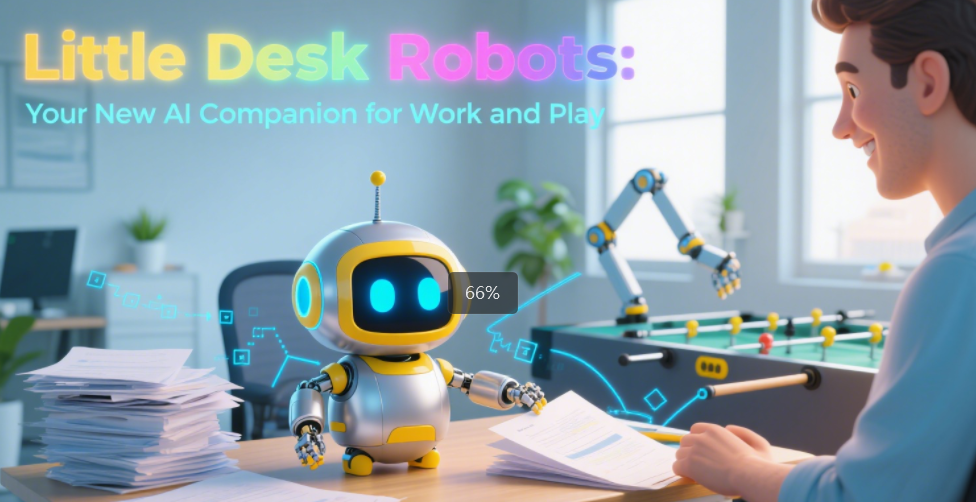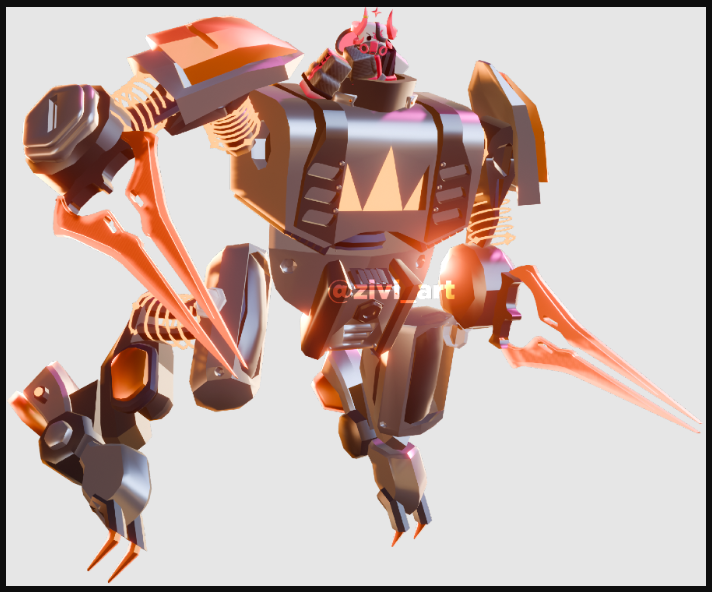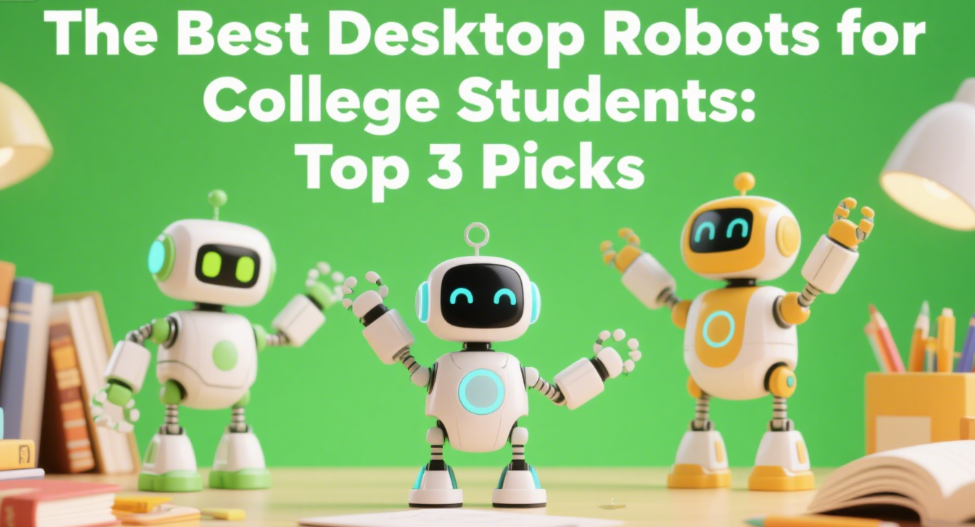
In the ever-evolving world of technology, little desk robots have emerged as charming and functional companions for your workspace. These pint-sized AI marvels are designed to sit on your desk, offering a blend of entertainment, assistance, and companionship. From telling jokes to recognizing your face, these robots are more than just gadgets—they're becoming an integral part of modern work life. As we delve into the world of little desk robots, we'll explore what makes them so special, how they work, and what the future holds for these delightful devices.
What Are Little Desk Robots?
Little desk robots are small, interactive robots designed to enhance your desk experience. They typically feature AI capabilities, allowing them to learn, interact, and respond to their environment. Popular models include:
Anki Vector: A robot with facial recognition and voice interaction, known for its playful personality.
Eilik: A companion bot focused on emotional intelligence and social interactions.
Ortomi: A customizable robot pet designed to combat loneliness.
LOOI Robot: A high-tech option with ChatGPT integration and wireless charging capabilities.
These robots are often described as "desk pets" or "AI companions," providing a mix of emotional support and practical utility. For a broader understanding of AI robots, check out our category on Learn more about AI Robot.
How Do Little Desk Robots Work?
Little desk robots are powered by advanced AI technologies, including machine learning algorithms that enable them to recognize faces, understand voice commands, and even learn from interactions. For instance, Anki Vector uses sensors and cameras to navigate its environment and respond to user inputs. Similarly, LOOI Robot integrates ChatGPT for natural language processing, allowing for more sophisticated conversations.
Key hardware components include:
Sensors: Detect movement and environmental changes.
Cameras: Enable facial recognition and navigation.
Motors: Allow mobility, such as rolling or turning.
Displays and Speakers: Show emotions and communicate with users.
Robot | Key AI Technology | Hardware Features |
|---|---|---|
Anki Vector | Facial recognition, voice AI | Sensors, cameras, wheels, OLED display |
Eilik | Emotional intelligence AI | OLED display, 4 servos, USB-C charging |
Ortomi | Interactive AI | Customizable cases, touch sensors |
LOOI Robot | ChatGPT integration | Tracking camera, wireless charger, motors |
What Can Little Desk Robots Do?
The functionalities of little desk robots vary by model, but common features include:
Voice Interaction: Answer questions, tell jokes, or engage in conversation.
Facial Recognition: Recognize and greet specific users.
Mobility: Move around the desk, often with wheels or tracks.
Entertainment: Play games, show emotions, or interact with toys.
Assistance: Set timers, reminders, or even charge your phone (e.g., LOOI Robot).
For example, Anki Vector can take photos, Ascend to the top of the page, play with a toy block, and express emotions like happiness or grumpiness. Eilik focuses on social interaction and can play or "fight" with other Eilik units. LOOI Robot stands out with its ChatGPT-powered conversations and wireless phone charging. For a detailed comparison of different models, explore our article on Exploring the Types of AI Desk Robots.
Benefits of Having a Little Desk Robot
Having a little desk robot can offer several advantages:
Companionship: Reduces feelings of loneliness, especially in remote work settings. Ortomi, for instance, was created to address loneliness during the COVID-19 pandemic.
Entertainment: Provides a fun break from work with playful behaviors, such as Eilik’s spontaneous expressions or Vector’s games.
Productivity: Assists with tasks like setting reminders or providing quick information.
Emotional Support: Many users find the presence of a robot comforting, similar to having a pet, with Ortomi noted for its calming effect on anxiety.
These robots are particularly appealing for tech enthusiasts and those seeking a unique way to personalize their workspace.
Potential Drawbacks
While little desk robots are innovative, they do have some limitations:
Cost: Models like Anki Vector ($250) and LOOI Robot ($179+) can be pricey.
Limited Functionality: They may not match the utility of full-sized AI assistants like Amazon Echo Dot, which offers similar features at a lower cost.
Maintenance: Regular updates and charging are required, with some models like Eilik needing USB-C charging every 1.5 hours of use.
Despite these drawbacks, their charm and novelty often outweigh the cons for many users.
Choosing the Right Little Desk Robot
When selecting a little desk robot, consider the following factors:
Price: Budgets vary, with prices ranging from under $100 for basic models to over $250 for advanced ones like Anki Vector.
Features: Decide which functionalities matter most, such as voice interaction, mobility, or specific AI capabilities like LOOI’s ChatGPT integration.
Compatibility: Ensure the robot works with your devices or smart home setup, noting that Eilik doesn’t require Wi-Fi, while Vector may need it.
Aesthetics: Choose a design that fits your desk and personal style, such as Ortomi’s customizable costume cases.
Consideration | Details |
|---|---|
Price | Ranges from $100 to $250+, depending on features and brand. |
Features | Voice interaction, facial recognition, mobility, entertainment, assistance. |
Compatibility | Check for Wi-Fi needs or device integration (e.g., LOOI’s app support). |
Aesthetics | Designs vary from sleek (LOOI) to cute and customizable (Ortomi). |
The Future of Little Desk Robots
As AI technology advances, little desk robots are poised to become even more sophisticated. Future developments may include:
Enhanced AI: Improved natural language processing for more intuitive interactions, building on LOOI’s ChatGPT foundation.
Personalization: Robots that learn your work habits and preferences over time.
Smart Home Integration: Controlling lighting, temperature, or ordering supplies, expanding on LOOI’s wireless charging feature.
Emotional Intelligence: Better detection and response to user moods, enhancing the companionship aspect seen in Eilik and Ortomi.
These advancements suggest little desk robots will become indispensable parts of our daily lives, blending seamlessly into work and home environments.
FAQs
What are little desk robots?
Little desk robots are small, AI-powered robots designed to sit on your desk and provide companionship, entertainment, and assistance.How do little desk robots work?
They use AI technologies like machine learning and natural language processing to interact with users, recognize faces, and perform tasks.What can little desk robots do?
They can answer questions, tell jokes, recognize faces, move around, play games, and even charge your phone, depending on the model.Are little desk robots worth the investment?
If you’re seeking a unique desk companion for entertainment and some utility, they can be worth it, especially for tech enthusiasts or remote workers.How do I choose the right little desk robot for me?
Consider your budget, desired features, device compatibility, and aesthetic preferences to find the best fit.
Conclusion
Little desk robots represent a fascinating intersection of AI and personal companionship. Whether you’re looking to add a touch of fun to your workspace or seeking a helpful assistant, these robots offer a glimpse into the future of interactive technology. As they continue to evolve, little desk robots may become essential tools for enhancing productivity and emotional well-being in our daily lives.







